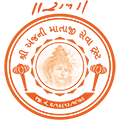

Ramnavmi is a Hindu Festival, celebrated to proclaim the birth of Lord Shri Ram- son of King Dashratha and queen Kaushlya of Ayodhya. The Ramnavmi festival falls in the Shukla Paksha on the Navmi i.e. the ninth day of month of Chaitra in the Hindu Calendar. Thus it is also known as Chaitra Masa Suklapaksha Navami, and marks the end of the nine-day Chaitra-Navratri celebrations.
Birth of Shri Ram
In the epic Ramayana, Dasharatha, the Emperor from Ayodhya, had three wives named Kausalya, Sumitra and Kaikeyi in the Treta Yuga. Their greatest worry was that they had no children, and so they had no heir to the throne in the Ikshvaku Kula or royal lineage of great, pious, wonderful Emperors. Rishi Vasistha suggests him to perform Puthra Kamesti Yagna, through which he can have a desired child. He also advices him to invite Maharshi Rishyasringa to perform this yagna for him.
Emperor Dasharatha consents and heads to Maharshi Rishyasringa’s ashram, to invite him. Maharshi agrees and accompanies Emperor Dasharatha to Ayodhya (Capital of Avadha) and performs the yagna. As the result of this yagna, Yagneshwara appears and provides Dasharatha a bowl of divine pudding (Kheer/Payasam) and requests him to give it to his wives. Dasharatha gives one half of the payasam to his elder wife Kausalya, and another half to his younger wife Kaikeyi. They both give half of their portions to Sumitra. After few days all three Queens conceive.
On the ninth day (Navami) of Chaithra Masa (first month in Vedic calendar), at noon Kausalya gives birth to Rama, Kaikeyi gives birth to Bharata, and Sumitra to twin boys, Lakshmana and Shatrughna.
Celebrations
Rama is the seventh incarnation of Vishnu, who takes birth by His own will, on Bhuloka (Earth) whenAdharma rules over Dharma. He protects all his devotees by vanquishing the roots of Adharma. Rama decided to incarnate to destroy an Asura or person with demonic and evil designs, called Ravana.
For the occasion, Followers of Hinduism fast or restrict themselves to a specific diet in accordance to VedaDharma. Vedic temples are decorated and readings of theRamayana take place. Along with SriRama, people also worship Sita, Rama’s wife;Lakshmana, Rama’s brother; and Hanuman, an ardent devotee of Rama and the leader of his army in the battle against the asura Ravana.
SriRama Navami is dedicated to remembering Rama, as the most supreme with resolute Bhakti (devotion). It occurs on the ninth day, or navami, beginning count from the “no moon day” or Amavasya, during the waxing moon duration called “Shukla Paksha”. Sri Rama Navami generally occurs in the months of March and April. Celebrations and festivities begin with prayer to the Surya Deva early in the morning.
There is some correlation between Lord Rama and Sun Worship. The Sun is considered to be the progenitor of Rama’s dynasty which is called the Sun dynasty (Raghukula or Raghuvamsa, Raghu means Sun and Kula or Vamsa mean familial descendant). Rama is also known as Raghunatha, Raghupati, Raghavendra etc. That all these names begin with the prefix Raghu is also suggestive of some link with Sun-worship. The hour chosen for the observance of the lord’s birth is that when the sun is overhead and is at its maximum brilliance. Hence at midday, when Rama incarnated on that day in Treta Yuga, that duration is special and hence devotional service to him is performed with Bhakti and piety.
In Northern India, an event that draws popular participation is the Rama Navami procession, also called Ratha Yatra. The main attraction in this procession is a gaily decorated chariot in which four persons enact the divine pastimes of Rama, His brother Lakshmana, His queen Sita and His pure devotee, Hanuman. The chariot is accompanied by several other persons dressed up in ancient costumes as Rama’s soldiers. The procession is a gusty affair with the participants praising echoing the blissful days of Rama’s rule as the Supreme Emperor on Bhuloka (Earth).